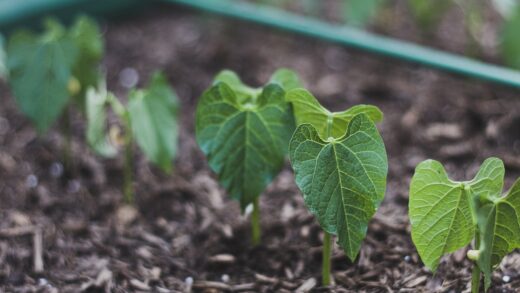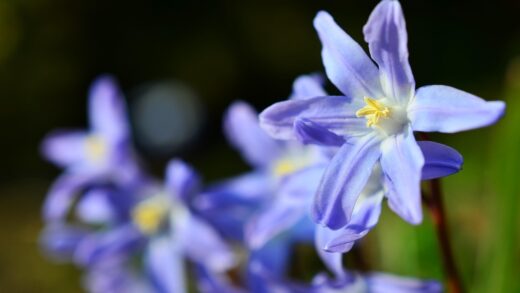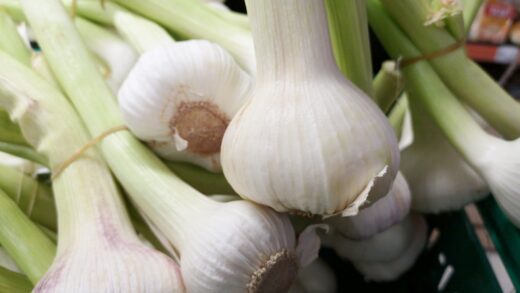While Daphne laureola is a relatively robust and resilient shrub, it is not entirely immune to problems from diseases and pests. A healthy, well-sited plant that is not under stress is always the best defense, as vigorous plants are far more capable of shrugging off minor issues. Most of the problems that can affect spurge laurel are directly linked to cultural practices, particularly those related to soil moisture and air circulation. By providing the right growing conditions from the outset—namely partial shade, excellent drainage, and a humus-rich, alkaline soil—you can prevent the vast majority of potential health issues before they ever have a chance to start.
The most significant threat to the health of any daphne, including spurge laurel, is root rot. This is not a single disease but rather a general term for a condition caused by various soil-borne fungi, such as Phytophthora. These pathogens thrive in overly wet, anaerobic (low-oxygen) conditions. When soil drainage is poor or the plant is consistently overwatered, these fungi can attack the root system, causing it to decay. The irony is that the above-ground symptoms of root rot often mimic those of drought—wilting, yellowing leaves, and dieback—leading inexperienced gardeners to water even more, thus exacerbating the problem fatally.
Fungal leaf spots can also occasionally appear on the foliage, especially during prolonged periods of wet, humid weather. These typically manifest as dark brown or black spots on the leaves, sometimes with a yellow halo. While generally not a serious threat to the overall health of the plant, a severe infection can be unsightly and may cause some premature leaf drop. The key to managing leaf spot diseases is to improve air circulation around the plant and to avoid overhead watering, which wets the leaves and creates an ideal environment for fungal spores to germinate.
In terms of pests, spurge laurel is not a primary target for most common garden insects, likely due to the toxic compounds present in its sap and tissues. However, it can occasionally be susceptible to sap-sucking insects like aphids, particularly on soft, new growth in the spring. A heavy infestation can cause distortion of new leaves and can produce a sticky substance called honeydew, which may then lead to the growth of sooty mould. Vigilance and early intervention are key to keeping these pests in check before their populations can explode.
Preventative healthcare for your shrub
The most effective approach to managing diseases and pests on Daphne laureola is prevention. This strategy begins with placing the plant in the right location. A site with good air circulation is crucial, as stagnant, humid air is a breeding ground for fungal diseases. Avoid planting it in a crowded border where air cannot move freely around the foliage. Similarly, ensuring the soil has excellent drainage is the single most important step you can take to prevent the dreaded root rot. Amending heavy soils with organic matter and grit before planting is a vital investment in the plant’s long-term health.
More articles on this topic
Proper watering technique is another cornerstone of preventative care. Always water the plant at its base, delivering moisture directly to the soil where it is needed. Avoid using overhead sprinklers that wet the entire plant. Wet foliage, especially if it remains wet overnight, provides the perfect conditions for fungal spores like those that cause leaf spot to take hold. Furthermore, by watering deeply and infrequently, and only when the soil is beginning to dry out, you create a soil environment that is hostile to the water-mould fungi responsible for root rot.
Maintaining good garden hygiene is also a simple but effective preventative measure. Rake up and dispose of any fallen leaves from around the base of the plant, especially in the autumn. Diseased leaves can harbor fungal spores that can overwinter in the debris and re-infect the plant the following spring. Pruning out any dead, damaged, or clearly diseased branches with clean, sterilized secateurs as soon as you notice them will also help to limit the spread of potential pathogens and keep the plant healthy and open in structure.
Finally, promoting overall plant vigour through good cultural practices is a key defense mechanism. A healthy plant is a resilient plant. This means ensuring the soil pH is appropriate, providing a mulch of organic matter to supply slow-release nutrients, and protecting the plant from environmental stresses like excessive sun exposure. A plant that is not struggling to survive in suboptimal conditions will have more energy reserves to defend itself against attacks from both pests and diseases, often without any need for chemical intervention from the gardener.
Fungal foes of spurge laurel
The most formidable fungal disease affecting Daphne laureola is, without a doubt, root rot. This condition is almost always a result of poor drainage and excessive soil moisture. The fungi responsible, primarily from the Phytophthora and Pythium genera, are water moulds that are present in many soils but only become problematic in saturated conditions. They attack the fine feeder roots, causing them to turn brown, soft, and mushy. As the infection progresses up the root system, the plant is no longer able to absorb water and nutrients, leading to wilting, yellowing leaves, branch dieback, and eventual death. Prevention through excellent drainage is the only reliable cure, as fungicides are rarely effective once the disease has taken hold.
More articles on this topic
Leaf spot diseases, caused by a variety of fungi such as Marssonina daphnes, are another potential issue, though usually less serious. These appear as distinct, often circular, spots on the leaves. The spots may start as small dark flecks and enlarge over time, sometimes developing a tan or grey center with a dark border. In a severe case, the spots can merge, and the affected leaves may turn yellow and drop prematurely. To manage leaf spot, improve air circulation by selectively pruning nearby plants if necessary, avoid wetting the foliage when watering, and clean up fallen leaves to reduce the source of fungal spores.
Botrytis, or grey mould, is another opportunistic fungus that can affect spurge laurel, particularly in cool, damp, and stagnant conditions. It typically attacks stressed or damaged plant tissue, such as flowers that are fading or leaves that have been injured. It appears as a fuzzy, greyish-brown mould and can quickly cause the affected parts to rot and decay. The best defense against botrytis is to ensure good air movement around the plant and to promptly prune out any dead or dying branches or flower clusters to remove potential entry points for the fungus.
Verticillium wilt is a more serious, though less common, soil-borne fungal disease that can affect daphnes. This pathogen enters the plant through the roots and infects the vascular system (the plant’s water-conducting tissues), clogging them up. This leads to a characteristic wilting of leaves on one or more branches, often starting on one side of the plant. The leaves may turn yellow and drop, and the branch will eventually die. There is no chemical cure for verticillium wilt, and because it lives in the soil, the only course of action is to remove and destroy the infected plant.
Common insect pests
While its toxicity deters many insects, Daphne laureola can sometimes play host to sap-sucking pests. Aphids are the most likely culprits you will encounter. These small, soft-bodied insects typically cluster on the tips of new shoots and the undersides of young leaves, piercing the plant tissue to feed on the nutrient-rich sap. A small number of aphids is not a major concern, but a large infestation can cause new growth to be distorted and stunted. They also excrete a sticky substance called honeydew, which can coat the leaves below and lead to the growth of black, unsightly sooty mould.
Managing aphids is usually straightforward, especially if they are caught early. A strong jet of water from a hose can be effective at physically dislodging them from the plant. For more persistent infestations, spraying with insecticidal soap is a good option. This works by disrupting the insects’ outer protective layer, causing them to dehydrate. It is important to ensure thorough coverage, especially on the undersides of leaves where aphids congregate. Encouraging natural predators like ladybirds, hoverflies, and lacewings into your garden by planting a diversity of flowers will also provide excellent long-term, natural aphid control.
Scale insects are another type of sap-sucking pest that can occasionally be found on the stems and undersides of leaves of spurge laurel. Adult scale insects are immobile and protect themselves with a hard, waxy, shell-like covering, making them look like small bumps on the plant. They feed in the same way as aphids, and a heavy infestation can weaken the plant over time. Because their protective covering makes them resistant to many contact sprays, control can be more difficult.
For small infestations of scale, you can physically remove them by scraping them off with a fingernail or a cotton bud dipped in rubbing alcohol. For larger problems, a horticultural oil spray applied during the plant’s dormant season can be effective. The oil works by suffocating the overwintering insects. During the growing season, repeated applications of horticultural oil or insecticidal soap can be used to target the vulnerable ‘crawler’ stage of the scale’s life cycle, which is when the young insects are mobile and have not yet developed their protective shells.
Integrated pest management
An Integrated Pest Management (IPM) approach is the most sustainable and environmentally responsible way to deal with any pest or disease issues on your Daphne laureola. IPM is a holistic strategy that prioritizes preventative measures and uses chemical controls only as a last resort. The foundation of IPM is regular monitoring. By inspecting your plants frequently, you can spot problems like an emerging aphid colony or the first signs of leaf spot when they are small and much easier to manage without resorting to harsh treatments.
The first line of defense in an IPM program is always cultural control. This involves creating a healthy growing environment that minimizes plant stress and discourages pests and diseases. For spurge laurel, this means providing excellent drainage, appropriate shade, good air circulation, and proper watering. A healthy plant is its own best defense. Good sanitation, such as cleaning up fallen leaves and debris, is also a key cultural practice that removes potential sources of infection.
If a pest problem does arise, IPM prioritizes biological and physical controls over chemical ones. Biological control involves encouraging the natural enemies of pests. For example, by avoiding broad-spectrum pesticides and planting flowers that provide nectar and pollen, you can build up a healthy population of ladybirds, lacewings, and predatory wasps that will help to keep aphid numbers in check naturally. Physical controls include actions like hand-picking pests, using water jets to dislodge them, or pruning out infested or diseased plant parts.
Chemical intervention is the final step in an IPM plan, to be used only when monitoring indicates that a pest or disease problem is reaching a level that will cause unacceptable damage, and other methods have been ineffective. When chemicals are necessary, the IPM approach advocates for using the least toxic options first, such as horticultural oils or insecticidal soaps, rather than broad-spectrum synthetic pesticides which can harm beneficial insects and the wider environment. This thoughtful, multi-faceted approach ensures a healthy plant and a healthy garden ecosystem.
📷: Josep Gesti, CC BY-SA 4.0, via Wikimedia Commons


















